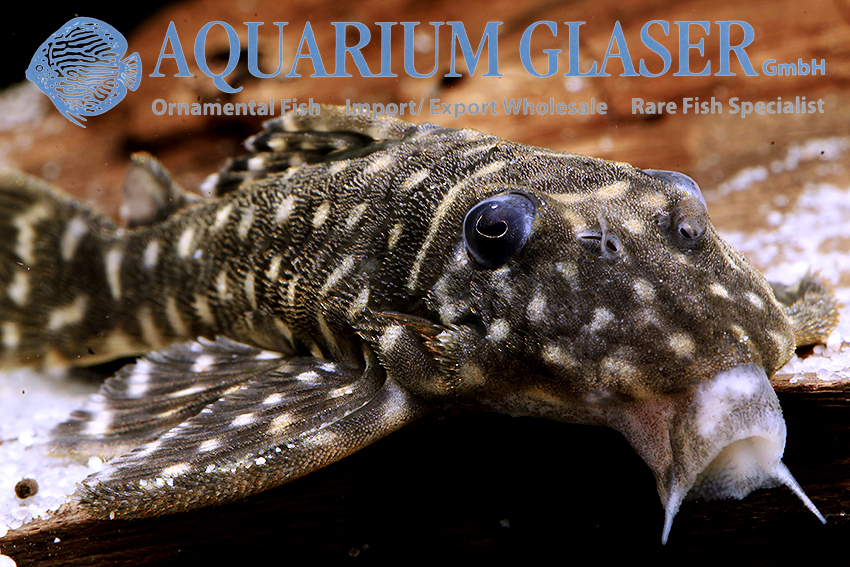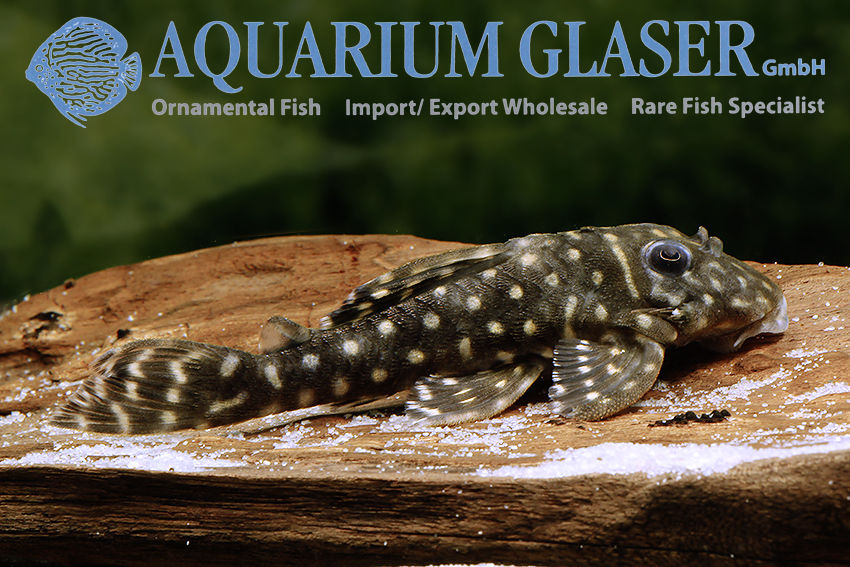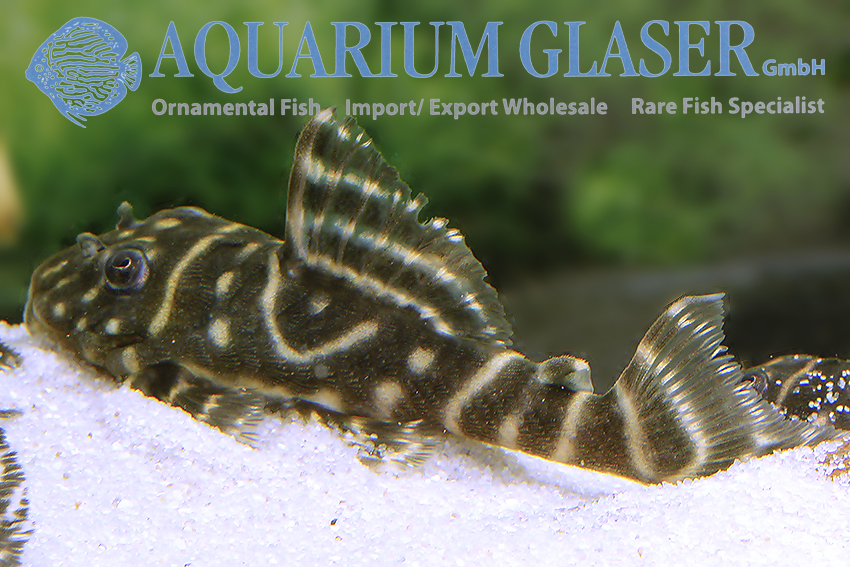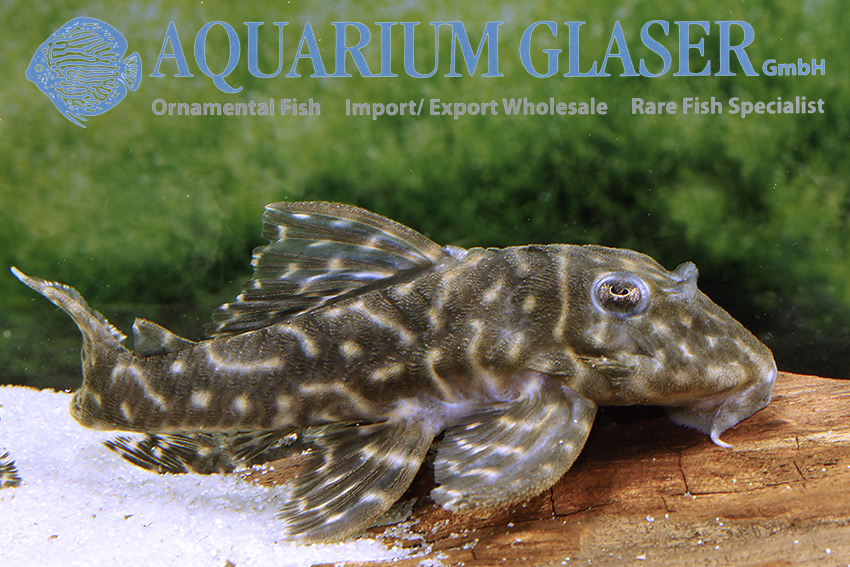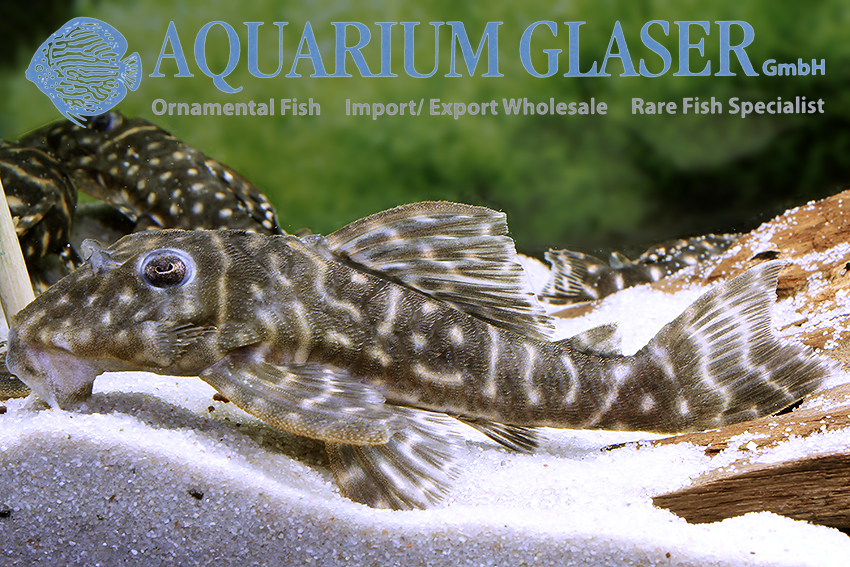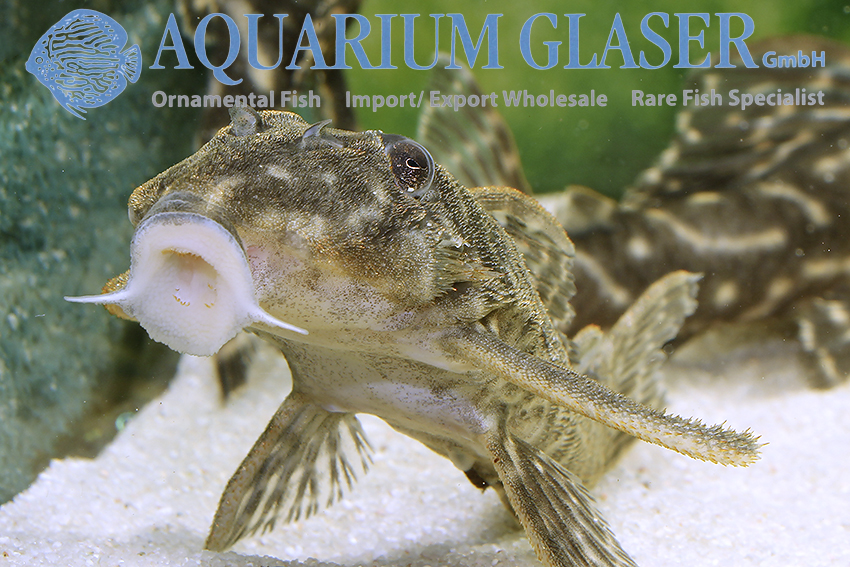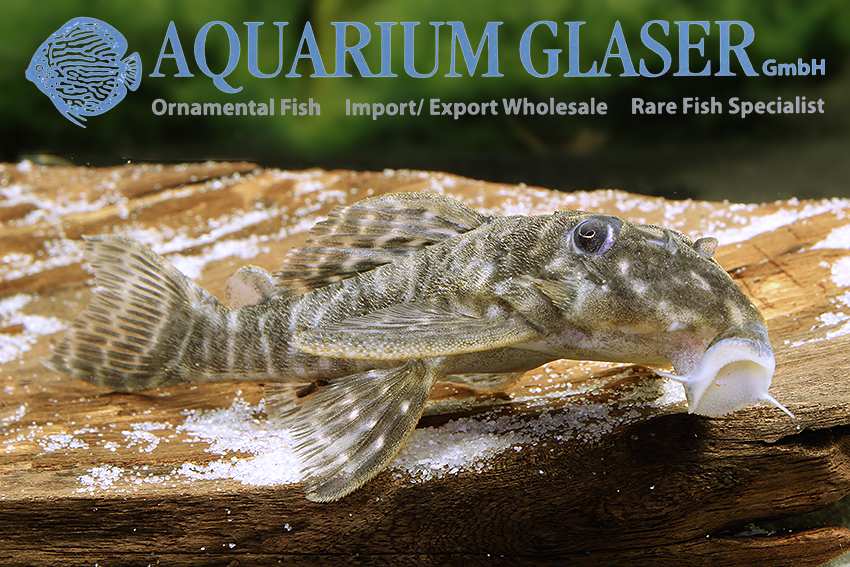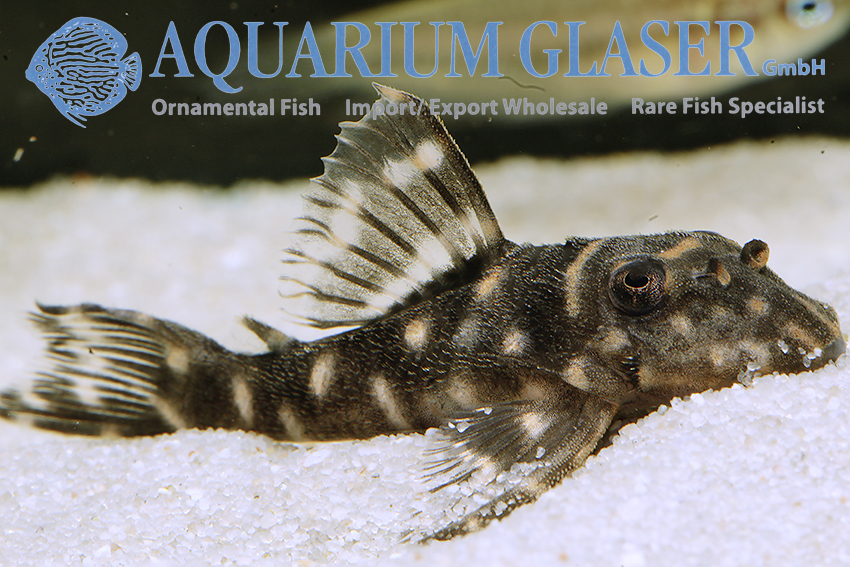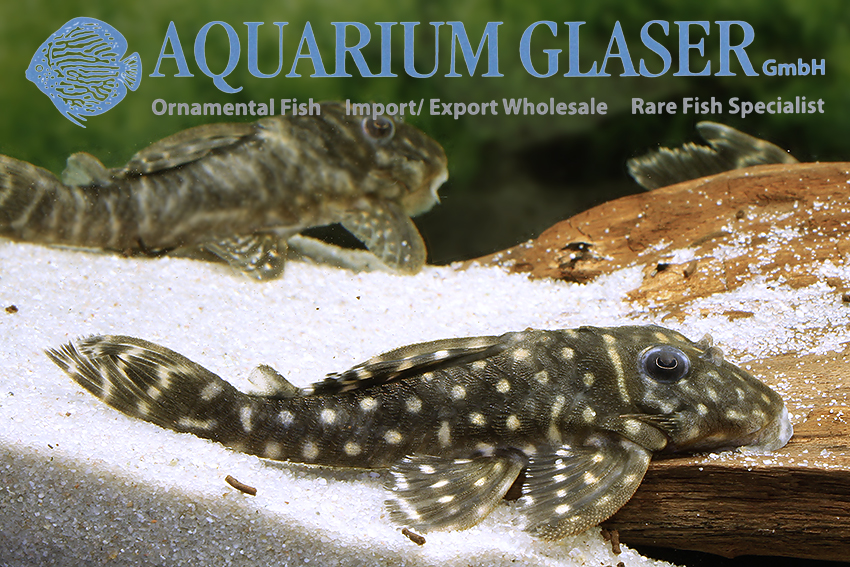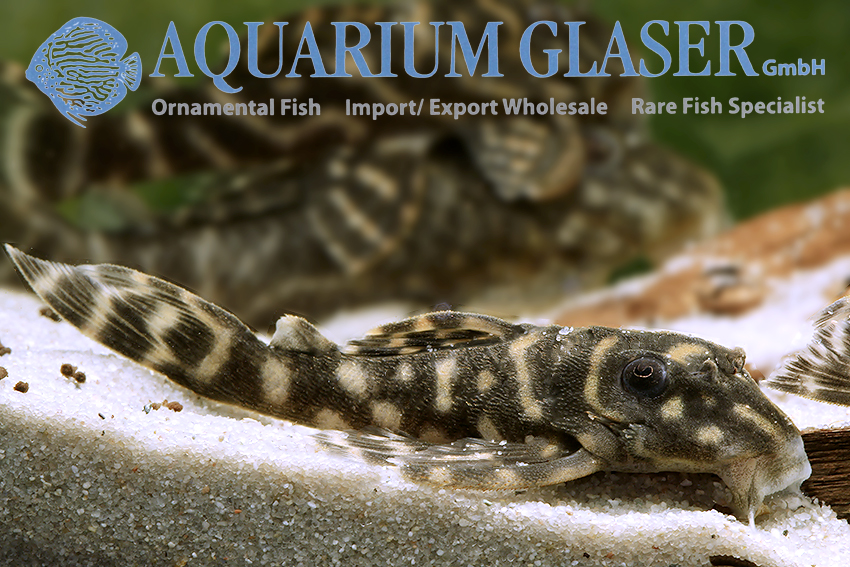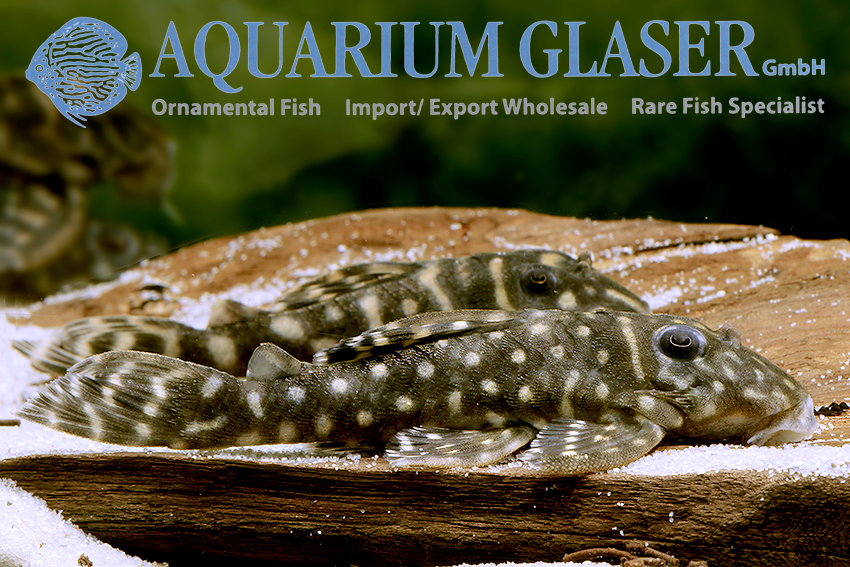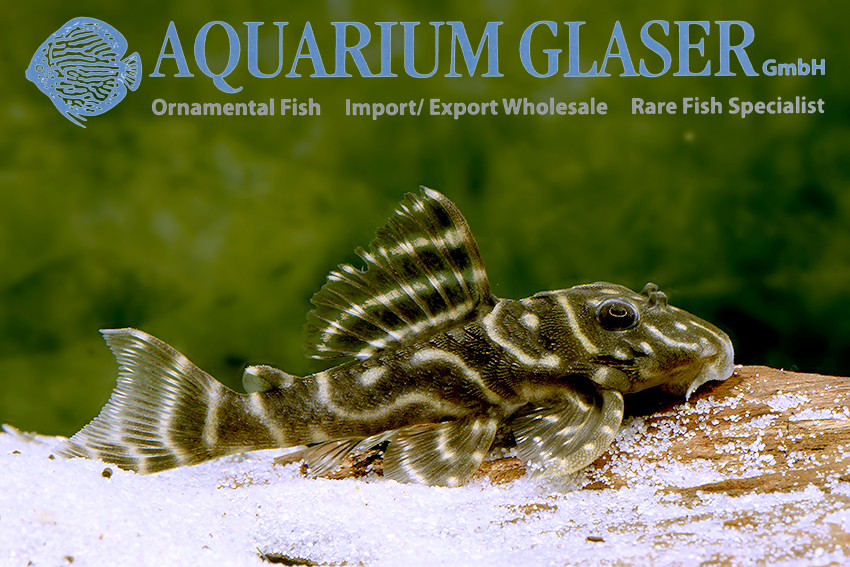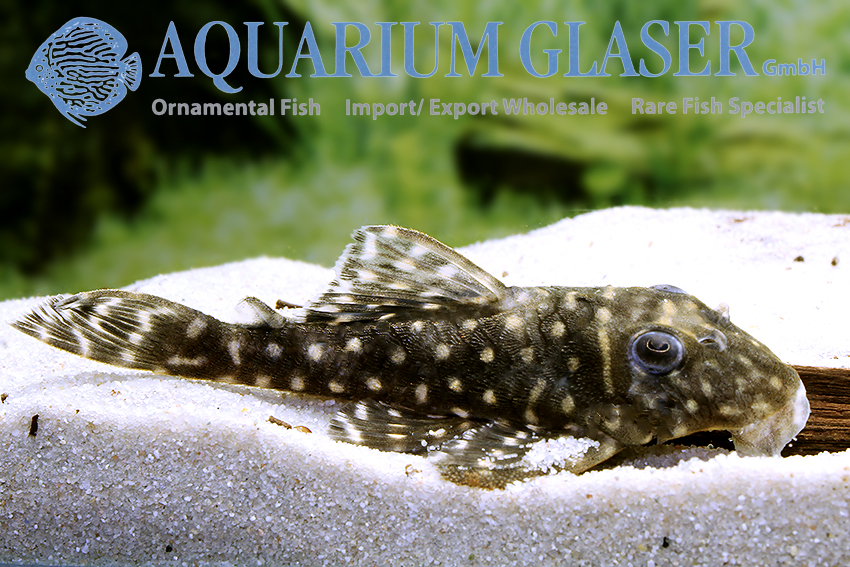The small remaining, nicely marked Hypancistrus debilittera from the Rio Bita (a tributary to the Rio Meta, Colombia, Orinoco drainage) enjoys a great popularity since years. Already with 7 cm length the males become sexually active, the maximum length is given with about 12 cm. We import this species regularly.
Recently we received a “Hypancistrus sp.” from Colombia, unfortunately without concrete locality information. The animals are 6-8 cm long. In this import were specimens which can easily be assigned to H. debilittera, but also completely spotted animals – and all conceivable transitions! All photos in this post were made from specimens from this import.
Therefore we decided to list these fishes as L129-variant. No question: if all animals would have been spotted, we would have seen a new L-number behind them. But this is not possible, because if we receive an order of only a few specimens and the customer happens to receive only “normal” L129, we become untrustworthy. Nevertheless it is an exciting phenomenon. Will the Hypancistrus of the Orinoco basin hybridize with each other as happily as their cousins in the Rio Xingu, for example, have been shown to do?
There is still a lot to explore about these catfishes, which only became known to science thanks to aquaristics. For this, however, one needs again and again also wild catches, in order to be able to judge the natural variation. So it shows again: serious aquaristics is a joyful science, without which the thorough research of biodiversity (species diversity) in small fishes is not possible. Biodiversity research, in turn, is the indispensable prerequisite for species conservation. And so the trade – also and especially with wild catches – is pure species protection. Species are never endangered by this.
For our customers: the fish have code 26480-L 129A-2 on our stocklist. Please note that we only supply wholesale.
Text & photos: Frank Schäfer





